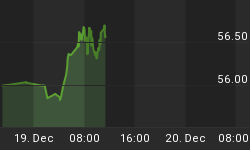Many U.S. shale firms have cruised through the past couple of years by borrowing money and drilling new wells, making the United States the world's top crude oil producer. The strategy worked for a while, especially when oil prices were around $60 a barrel.
But this year's oil price crash exposed the financial vulnerability of many U.S. shale companies who are now fighting for survival. All producers across the U.S. patch pulled back production volumes in April and May in response to the collapse in prices.
For some oil and gas firms, reduced capital budgets will not be enough to save them from defaulting on debt or seeking restructuring as cash flows are shrinking, while the window of access to capital markets and new debt remains, for the most part, closed.
Those firms who choose not to seek (or are not forced to seek) protection from creditors via Chapter 11 restructuring could look at other options to avoid bankruptcy, some of which may be a little unconventional.
Today, unconventional may be an understatement when it comes to describing the oil industry's state of affairs. All options – regardless of how (un)common they are – are on the table for struggling oil producers.
Industry consolidation, private equity firms acquiring assets or distressed companies, banks ending up holding oil and gas assets, or power utilities buying their providers of energy could be some of the options that oil firms might consider, Suzy Taherian, who worked with Exxon and Chevron at the start of her career, writes in Forbes.
Mergers & Acquisitions Hit By Uncertainty
U.S. shale firms have fewer financing options now than they did in the 2015-2016 downturn. Thus could drive consolidation in the industry with some attractive M&A opportunities emerging, according to Robert Polk, principal analyst with Wood Mackenzie's U.S. Corporate Research team, covering Lower 48 independents.
However, the industry isn't launching into a buying spree just yet, due to the heightened uncertainty and volatility in the oil market.
The U.S. upstream deal market collapsed in the first quarter of 2020, with all M&A transactions occurring before the oil price crash in early March, according to the Q1 2020 U.S. Upstream M&A Review of energy data analytics company Enverus. The largest deals in Q1 included bankruptcy sales and a royalty deal, Enverus's analysis showed. There may be opportunities ahead for select buyers who have access to capital, but the restart of M&As will likely take place when oil prices stabilize.
In Texas alone, M&A deals plummeted in Q1 with the collapse in oil prices. The deals dropped off so much so that the energy industry was not the leading sector in dealmaking in Texas for the first time in more than 12 years, Claire Poole from The Texas Lawbook wrote in the Houston Chronicle last month.
Going forward, the international oil majors will be the only companies left who can afford to buy shale assets at bargain prices, Boston Consulting Group said in an analysis in April. However, the current priorities of supermajors—preserving cash and, where possible, dividends--and the uncertainty about the market recovery would likely mean slow M&A activity in the coming months. Majors will also be likely looking to scoop top-quality assets if they consider acquisitions, BCG said.
"Given these constraints, oil and gas deals will be thin on the ground in the months ahead. Although many billions of dollars of assets and companies are up for sale, the supply of large, world-class ones is limited," BCG noted.
Banks Could End Up Managing Oil & Gas Assets
Lenders to the oil and gas industry may choose to refinance loans to struggling firms with some kind of transaction that converts debt into equity rather than allowing them to default on debt and declare bankruptcy, Taherian argues.
According to research firm CreditSights, cited by MarketWatch, Citigroup, Wells Fargo, Bank of America, and JP Morgan had the highest amounts of loans outstanding to energy firms as of the end of 2019. In terms of the percentage of energy loans of all loans, Goldman Sachs leads the ranking with 11.2 percent.
According to Reuters sources familiar with plans at the banks, Citigroup, Wells Fargo, Bank of America, and JP Morgan started working in early April on forming independent companies that would manage oil and gas assets in case distressed oil firms became unable to pay back loans. The process could take months, but it could allow banks to hold to the assets until conditions and oil prices improve to sell them at fair values, instead of at fire-sales for pennies on the dollar.
Utilities Acquiring Their Energy Providers
Some distressed energy producers could find their potential saviors among their utility customers, according to Taherian, who says that struggling oil and gas firms have approached some utilities looking for a possible friendly buyer.
This would be an unconventional approach to saving oil firms from going under, but these days, nothing is off the table when it comes to the oil industry.
North American Oil Bankruptcies Set To Surge
Meanwhile, between January and May, a total of 18 oil and gas firms filed for bankruptcy protection in North America – five in Q1 and 13 in the first two months of Q2, law firm Haynes and Boone said in its latest Oil Patch Bankruptcy Monitor with data to May 31.
"Lower for longer remains the watchword for producers and their creditors. It is reasonable to expect that a substantial number of producers will continue to seek protection from creditors in bankruptcy even if oil prices recover over the next few months," Haynes and Boone said.
By Tsvetana Paraskova for Oilprice.com
More Top Reads From Safehaven.com:
















